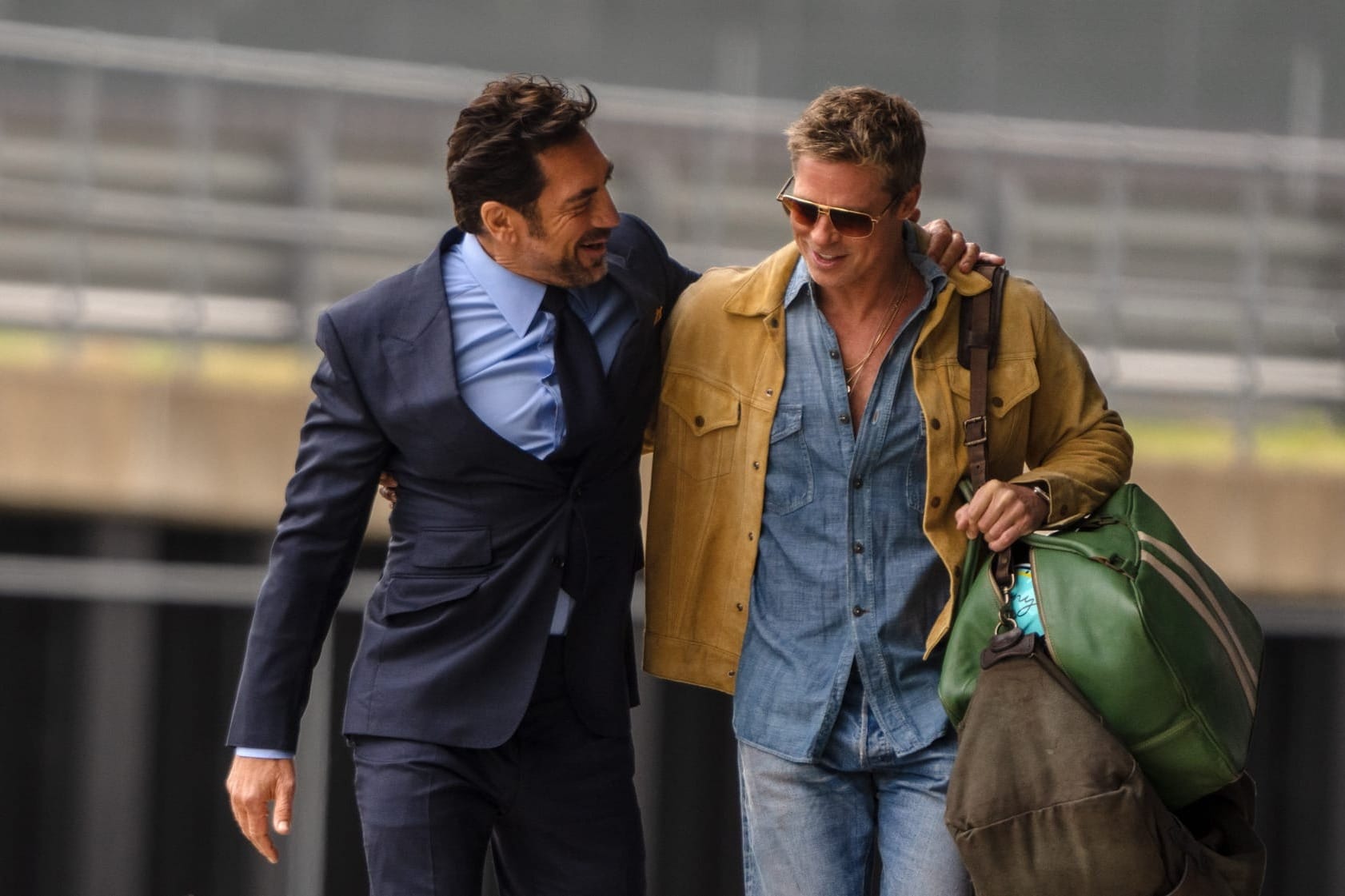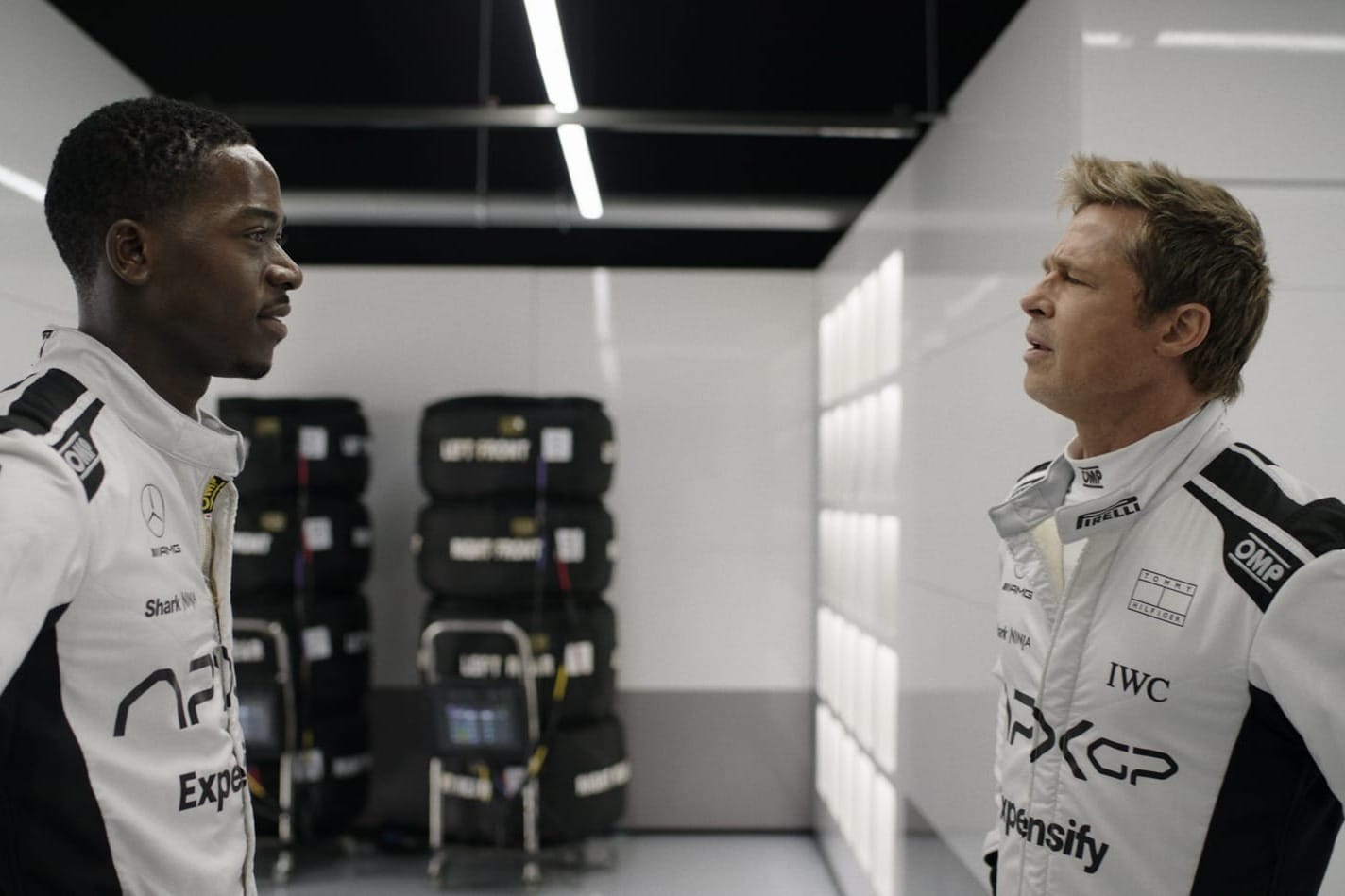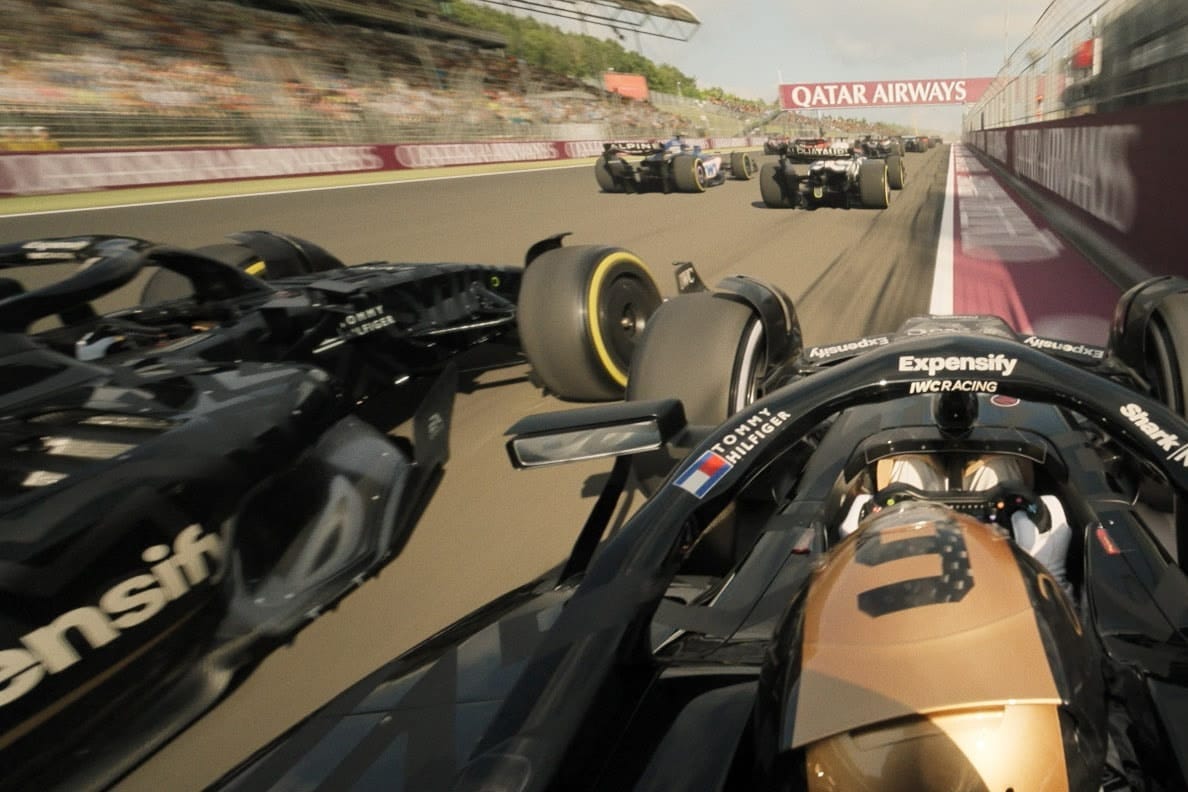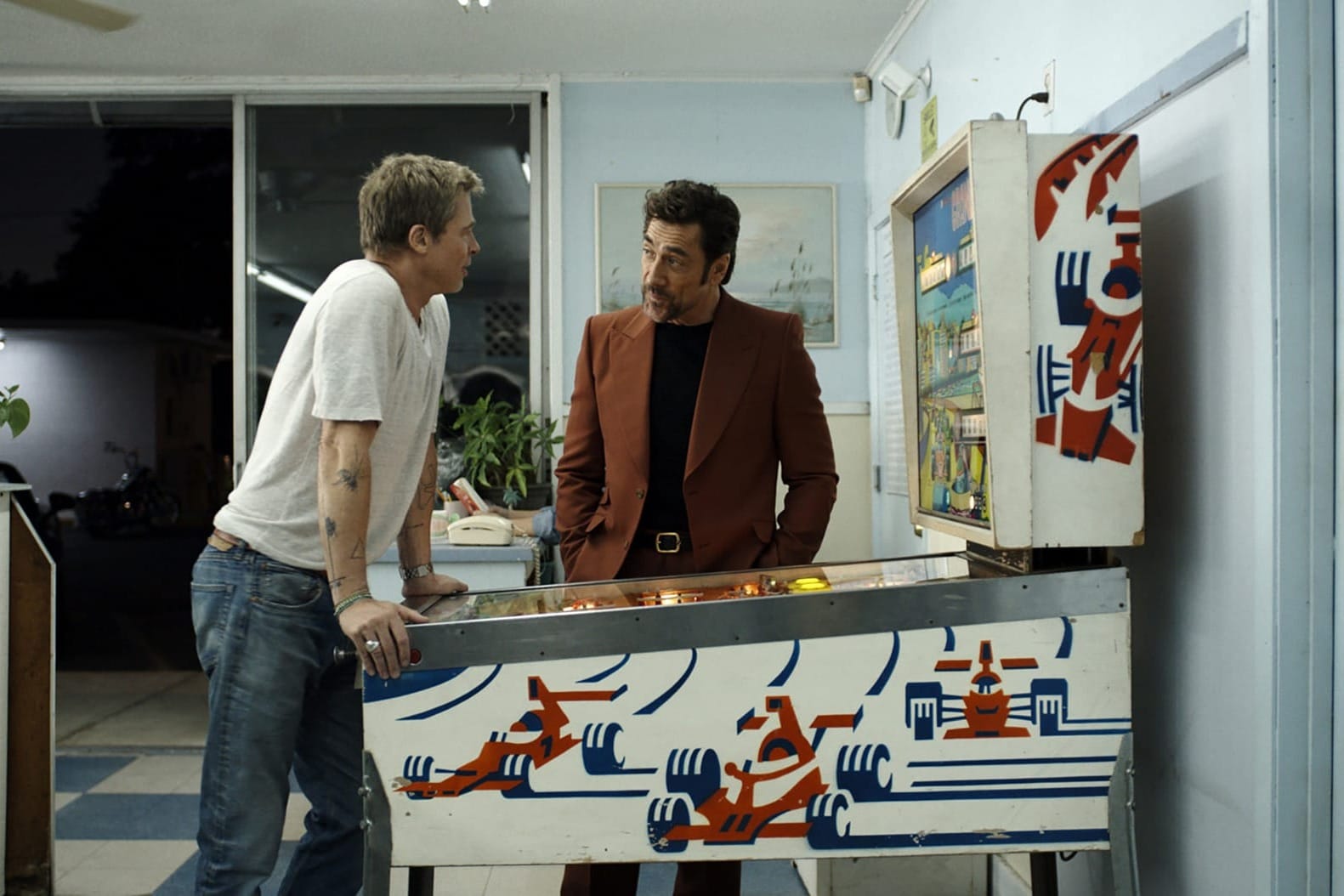Formula 1’s first step into the cinematic world is here, with F1: The Movie released in the UK on Wednesday.
And there’s a lot riding on it, given the publicity the production process received and the substantial (financial) resources that went into making it.
Is it one for the purists or just part of the promotional machine?
Here’s our team’s verdict on the good, the bad, and the downright disappointing.
The emotional gravitas of SpongeBob
Samarth Kanal
Brad Pitt’s PR machine is firing on all cylinders in F1: The Movie as he lives out a fantasy of playing the almighty saviour of a ragtag Formula 1 team that has nothing but McLaren’s shiny headquarters and a baffling, messianic hope that an old wildcard can save its fortunes.
Pitt’s character, Sonny Hayes, basically steps into a team, spends less than half a season courting female technical director Kate McKenna (Kerry Condon) who delivers her lines with the fervour of a tired mum in Morrison’s, while teaching his team-mate Joshua Pearce (Damson Idris) how to perform an overtake at Monza. Which – for some baffling reason – ends in calamity when Pearce foregoes that advice.

Team boss Ruben Cervantes (Javier Bardem) is the only standout role in this movie that starts with a great racing scene at the Daytona 24 Hours and then stumbles through rom-com set pieces, extremely clumsy racing scenes in which someone inevitably crashes, and various montages, until it gets to its season finale in Abu Dhabi.
The female characters are poorly presented in this; aforementioned technical director McKenna and mechanic Jodie (Callie Cooke) on Pearce’s team are both portrayed as hapless, lovestruck damsels in distress around short stints as professionals. The characters of colour are also rubbish with limited narrative access; Pearce is bland, flipping inconsistently from a competitive rookie to an affable sideman, while his manager Cash (Samson Kayo) is a strange comedic addition.
Worst of all, Pitt just smirks his way through the film, wafting about until he’s summoned upon to act as APX GP’s saviour.
It leads to scenes with the emotional gravitas of an episode of SpongeBob Squarepants and one-liners from a 2000s first-person shooter game.
It’s technically fine; the racing scenes are fun but the sense of speed is sometimes lost in the wide-angle shots, while there’s a sense of uncanny valley when the APX GP car is placed upon the 2023 grid.
A must-watch with a huge flaw
Charley Williams

There may be better racing films out there but none of them channel the adrenaline rush of driving at speeds of over 200mph so beautifully.
The eagle-eyed amongst you will notice some inconsistencies but for the most part, the sheer accuracy of F1’s depiction of the sport itself is fantastic.
As far as glorified advertisements go, this film will surely do its job in bringing in new fans.
In reality, you’ve probably seen this film before. Driver devotes their life to the sport they love, searching for that moment in the car where everything goes silent and they drift off into racing bliss. It’s cheesy, far-fetched and full of motorsport cliches.
It’s your typical Hollywood film but if you’re after a feel-good movie where you can immerse yourself in the familiarity of your favourite sport, it’s probably worth a watch.
What was most disappointing is how the film spectacularly fumbles the ball on female representation. Kate McKenna, technical director of APX GP – the first woman in F1 history to have such a senior role – abandons her entire car concept for a man who hasn’t driven in F1 for many, many years.
Another female character is a pit crew member who is at first portrayed as utterly useless. Dropping tools around the garage, bumping into people and making mistakes during pitstops – to which driver Joshua Pearce reacts “of course” when she admits it was her fault.
Let’s not forget how Pearce’s manager suggests his career will be fine because “the ladies love his smile”.
All that was missing was a man asking the women what DRS was or who won the 1982 Swiss Grand Prix.
It’s 2025, do better.
A view of how F1 sees itself
Edd Straw

F1: The Movie certainly has plenty of interest to offer to motorsport fans. The trouble is that the list of reasons why it’s worth watching for The Race readers does not include it being a particularly good film.
In fact, it’s firmly in two-star territory on that score for me thanks to its weak plot, increasingly confused editing, shallow characters and lack of any kind of emotional hook.
However, motorsport fans can take interest in what it reveals about how F1 sees, or rather wants to portray, itself. And the way it demonstrates spectacularly – in moments – what is possible with the cutting edge camera technology used to make it possible. Plus plenty of familiar faces making cameos – albeit with a significant drop-off after the impressive early track scenes.
From that perspective, it’s definitely worth watching and ideally on IMAX for maximum visual impact – it’s just a shame that this makes it a more academic experience than the thrill-ride the makers wanted to produce.
The trouble is that as well as its limitations as a drama, it’s also weighed down by the collaboration with F1. I can live with the hokey plot and some of the contrivances needed to drive the wafer-thin narrative, but there’s far too much self-conscious inclusion of F1 authenticity that, for example, makes tyre strategy too big a plot point.
Then there’s the troubling aspect of the team’s Singapore 2008-style behaviour, which really isn’t justified by the supposed shabby treatment by the F1 establishment. And worst of all for what should be a visual feast, there’s too much explaining the plot going on through dialogue placed over what should be the impactful on-track sequences.
It’s not a documentary so the inaccuracies and the liberties taken are to be expected. For that reason, it can get away with Brad Pitt as an F1 driver thanks to the suspension of disbelief, but that generosity doesn’t extend to the overly shallow script that makes this one of the less charismatic performances you’ll see from him.
There’s simply little for an actor to work with, which is something that weighs down all the performances – doubly so the poorly treated female characters working on the race team.
A missed opportunity, certainly, and one I suspect will disappoint the average moviegoer – even if there’s enough there to justify motorsport fans taking a look.
It delivers – even for the hardcore fans
Jon Noble

Is F1: The Movie going to be on anybody’s list of the best 10 films of all time? Unlikely.
Does that stop it delivering two hours and 36 minutes of damn good entertainment that makes it a must-see racing movie? Absolutely not.
It’s been hyped for so long, and its progress has been followed closely in the paddock, so it was always going to be difficult for the finished product to live up to expectations.
However, it does a pretty good job in delivering something that will grab even the most hardcore of fan.
It is not perfect, but the storyline holds together enough, and the journey of Sonny Hayes from his Daytona 24 Hours win at the start all the way through to his F1 success in Abu Dhabi is captivating to watch.
It is the action scenes that stand out though, with the super-impressive special effects leaving you struggling to work out at times just how they managed to incorporate the APX GP cars into the real life racing action.
And some of the onboards are amazing; the way it puts you in the car for the race starts and gives that sense of isolation and anticipation all the drivers go through as those red lights come on is done so well.
Best of all, it does not let itself down with some cliched reason as to why a backmarker team can suddenly win, such as pushing the throttle down a bit more or finding an extra gear the driver did not know they had.
Sure, some of the plot is a bit Hollywood – such as building a car for “combat” and deliberately driving into rivals to help team-mates – but it was always going to be a hard balancing act between authenticity and storytelling.
And while not everyone is going to like it, it will hopefully convince an all-new audience fresh to F1 to tune in to the real thing.
A descent into dead-ends + missed opportunities
Jack Cozens

The opening scene in F1: The Movie is genuinely among the most memorable I can recall, as Brad Pitt struts towards his Daytona 24 Hours pitbox approaching midnight, hops into his Porsche, lights up the rear tyres and releases the speed limiter to the sound of Whole Lotta Love.
Maybe that reaction was to be expected, career choice considered, but I’d challenge anyone not to be impressed by what’s achieved visually; it’s so striking and is what this film should be all about.
What a shame that from those heights it descends – once it actually gets into the world of F1 – into a deeply forgettable and unfulfilling piece characterised by narrative dead-ends, over-explanation in key areas (and under-explanation in loads more), continuity miscues that are bound to irk F1 fans, and a whole heap of missed opportunities with the action itself.
Narrative dead-ends might be harsh; there are enough interesting subplots that are hinted at. But there’s another example of missed opportunities – as those are spurned in favour of a wider arc of races that while in isolation (with some suspended reality required) don’t seem too fanciful, combined add up to an inconceivable sequence of events that at times somehow still manages to verge on dull.
Take nothing away from the camera technology and some of the shots – it’s just what that’s paired with sometimes ends up feeling like an opportunity to sell products, rather than the product: F1 cars at their raw, unfiltered best.
And that’s all the more disappointing owing to its tantalising intro.
Another example of how forward-thinking F1’s become
Luke Francis

Film is a powerful tool that, when harnessed correctly, can create a connection between the viewer and the subject unlike any other form of entertainment.
In my personal experience, Rush – the 2013 biographical depiction of Niki Lauda and James Hunt’s infamous rivalry – was my first taste of the speed and emotions of F1. This spurred me on to learn more. First came the spectacular but heart-wrenching Senna documentary (2010). And secondly, the pioneering film-making spectacle Grand Prix (1966).
Now 12 years on from my initiation, F1: The Movie is the first taste of motorsport for millions of prospective fans – young and old – and it seems to me based on the opinions of my friends, family and colleagues that the overriding flavour of this blockbuster was Marmite.
I knew before I stepped foot in Odeon Wimbledon that it wasn’t produced for avid, die-hard fans like me. Therefore I am not in a position to give a truly critical viewpoint on this film. I will leave that to the many fringe and prospective fans for whom the film was clearly intended. Nor will I give a technical breakdown of the cinematography, script-writing and storyline architecture – that’s simply not my gig.
But what I feel I can make a comment on – hopefully – is the broader commercial and promotional objectives of the film from all stakeholders involved. There’s no hiding the fact that F1: The Movie was a two-hour, 36-minute advertisement for F1 aimed at driving higher viewership, developing fan engagement, and ultimately boosting the commercial value.
Since F1 was taken over by Liberty Media, it’s a reasonable viewpoint that F1 has been the most digitally innovative and forward-thinking sporting competition in the world, and this film is a brilliant example of that: after over half a century of F1’s intellectual property being locked behind a 20-inch steel vault door, this film leaves no stone unturned in showing the world every single facet of F1 there is to see. The turnaround here is simply astonishing.
The integration of APX GP into the real-world circus of F1 was supremely impressive and – for lack of a better term – very cool. Scripted cameos from the likes of Toto Wolff, Zak Brown and Fernando Alonso were a brilliant inclusion which continued Drive to Survive‘s objective of pushing the personalities in the sport.
That said, whether it was the gravity-defying crashes, painfully cringe-worthy scripting, or extremely forced attempt by ‘Crofty’ and Brundle to deliver what felt like a bitesize university lecture on F1, it’s not unreasonable to say F1: The Movie was a painful watch at times.
Still, if a sequel does come along, let’s hope they are a little more creative with the title. At least we can rest assured they won’t call it F2.





